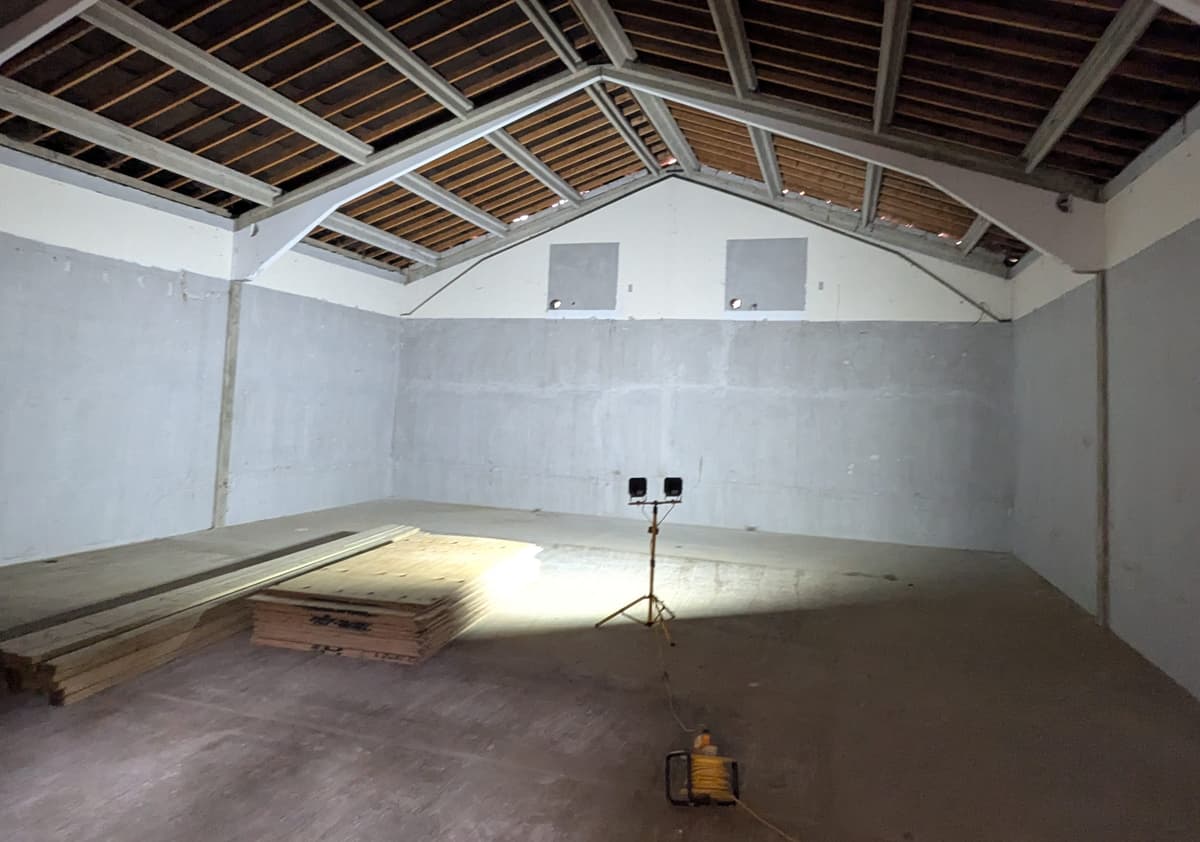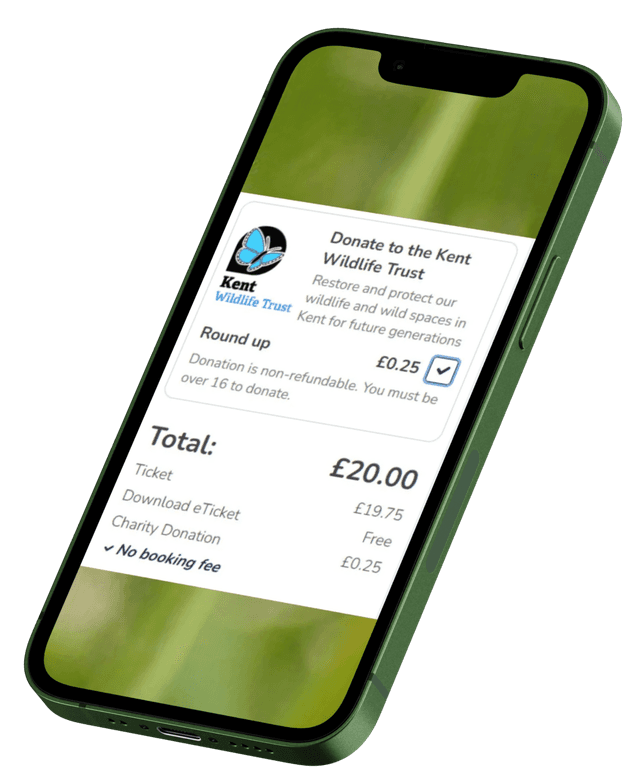
Your digital companion to a wilder future
We're so excited to finally share that our brand-new MyWilderKent app is now ready to go, and as a valued Kent Wildlife Trust member, you’re getting early access before we launch to the public early next year.
MyWilderKent is a digital platform designed to support people across Kent in taking simple, meaningful steps for nature. Whether you’re planting wildflowers or joining a local clean-up, this app will help you record what you’re up to and find ideas that suit your space and lifestyle.
We understand that knowing where to start can be difficult, and that for some, especially those with limited mobility or access to information, it can feel even harder to take part. That’s why MyWilderKent has been built as a welcoming, user-friendly digital gateway. It aims to remove barriers by offering resources, guidance and inspiration in a clear and accessible way, no matter your starting point.
Your personalised profile allows you to record your actions and plan for the future, all tracked against your growing Impact Score. You’ll be able to earn badges, take part in seasonal activities and celebrate your community’s progress in the leaderboards. Our live map shows nature-positive activity happening all over the county, connecting you to a growing community working together for wildlife.
This early access is our way of saying thank you for your support. It’s your chance to explore the app before its full release, give feedback and suggest ideas, and start recording your nature journey before everyone else!
As part of this launch, we’re also running an exciting monthly raffle for all users that have been active in the MyWilderKent app that calendar month, so make sure to log how you’ve been helping wildlife this autumn!
Our hope is that MyWilderKent becomes your go-to companion for nature. Installing the app and creating an account only takes two minutes – all you need to do is follow the simple instructions below!

Science Zone
Discover your inner scientist
The systematic conservation planning process
Nature recovery in Kent is taking place against a backdrop of competing demands on land. To maximise benefits for Kent’s important and varied animal and plant life, recovery efforts should be guided by robust, evidence-based approaches. One such approach is systematic conservation planning, which is widely used globally and beginning to gain traction in the UK. As part of my PhD, in partnership with Kent Wildlife Trust, I’ve been exploring how systematic conservation planning could guide nature recovery across Kent.
What is systematic conservation planning?
Systematic conservation planning is a structured framework for identifying priority areas for conservation and restoration actions. For our work in Kent, we began by setting clear goals for nature recovery, identifying the important species, habitats and landscapes, and setting targets on how much of each should be conserved, restored and created. Next, we used spatial prioritisation software to pinpoint the best places for meeting these targets while minimising impacts on farming. The resulting map of Kent identifies priority areas for conservation and active restoration, and for passive wilding.
Passive wilding
Passive wilding is a less prescriptive approach to management that helps restore natural processes through reduced human intervention. To explore how passive wilding could contribute to a broader nature recovery strategy, we first identified and mapped the key factors that affect where it is feasible. Once we produced a map of suitable areas for passive wilding, we set a target to include 25% of this suitable area in our overall prioritisation. This was designed to complement the areas needed to meet the other nature recovery goals.
What have we found?
Systematic conservation planning proved a useful tool for identifying where to focus conservation work and reduce conflicts with farming. By including passive wilding in the analysis, we can highlight areas where this low-intervention management approach can work alongside actively managed sites to help achieve goals for habitat and species recovery.
What's next?
I recently got to present this work at the International Congress of Conservation Biology in Brisbane, which led to a lot of interesting discussions with conservationists from around the world!

More broadly, we have explored how systematic conservation planning might help guide landscape-scale recovery projects in Kent. I am looking forward to seeing how the results could support evidence-based conservation in the future, as there is lots of potential for future work to build on this project.

Thank you to everyone who has been getting stuck in with our Bugs Matter survey this season.
This citizen science initiative, in partnership with Buglife, is open to anyone nationwide travelling in a vehicle with a number plate, and it simply asks you to count the number of insect splats on each journey. We’re on track to beat the number of journeys logged last year, with over 8,200 already!
Funding from the Amazon Web Services Imagine Grant enabled us to start expanding the survey this year into the Republic of Ireland. There are plans next year to launch in France, with other countries in the pipeline for the years to come, so you can continue surveying if you’re abroad.
The results from previous years (2021-2024) have shown a 63% drop in the number of flying insects recorded. It will be interesting to see what this looks like when we add this year’s data into the mix, especially given the relatively dry, warm spring and summer we have experienced.

© Rosie Bleet
The changing weather patterns in the UK (and beyond) are one reason why it is important to study our flying insects in the long term. They have relatively short life cycles, and therefore their populations can fluctuate significantly from year to year. Continuation of the Bugs Matter survey in the years to come will be key to learning more about how these creatures are faring. By studying factors like weather, we can start to understand more about the potential reasons for changes in the number of splats.
If you’re yet to get splatting, don’t worry, there is still a week or so until the survey season finishes on 30 September!
The season so far...
Top recorders have logged 390, 354 and 311 journeys each.
Sevenoaks Visitor Centre and Reserve Update
As many of our members and regular visitors to Sevenoaks Wildlife Reserve will know, big changes are underway. After some initial delays, the transformation of our much-loved Visitor Centre and the surrounding reserve got going in early May, and we’ve made some exciting progress already.
Laying the groundwork
We kicked things off by securing the site, removing the old car park surface and beginning a full strip-out of the Visitor Centre interior. At the time of writing, the first section of the car park is now taking shape, with new parking bays being installed, ductwork laid for the electric vehicle charging point and a brand-new path connecting the far end of the car park to the Visitor Centre.
Meanwhile, scaffolding is up in preparation for our new skylights and the installation of the solar panels – an important step in making our site more sustainable.
Improving access for all
The next phase of the works will see the resurfacing of the old angler’s track, which will become our new exit route. We’re also creating new overflow and coach parking, making it easier for school groups to visit and connect with nature.
These civil engineering works are no small feat, but they’re paving the way (literally) for a much better visitor experience.
A new look and a new perspective
The transformation of the Visitor Centre itself is going to be huge. Previous visitors will know that the old building needed a major facelift. There were no windows facing the beautiful West Lake and limited café space, which meant the Visitor Centre was often overlooked.

You'll be able to pick up a hot coffee and delicious sandwich here
The café seating area is moving into the old museum room, where natural light will pour in thanks to new double-height barn doors. You will be able to step outside to enjoy a new decking area, overlooking the West Lake. This relaxing space will allow you to connect with nature like never before. Expect fresh coffee, delicious cakes and toasted paninis – plus a bespoke new play area designed to spark imagination, adventure and a love for the wild for young visitors.

Cafe seating will go here, with double-height barn doors
Looking ahead
We’re hoping to open the doors and welcome you back in late autumn, all being well. Projects like this can face delays, but our contractors are working hard to deliver our new facility as soon as possible.
In the meantime, follow our progress on our website kwtg.uk/sovc-refurb and social media channels.
See you soon!
A partnership made for nature

We are delighted to announce a new partnership
Southeastern, one of the busiest train operators in the South East, has joined Kent Wildlife Trust as a corporate sponsor – and it’s a partnership made for nature. Southeastern runs services across South East London, Kent and parts of East Sussex, managing 164 stations and over 1,000 miles of track, including the UK’s first domestic high-speed service.
And now, when you buy your train ticket on the Southeastern app or website, you can choose to round up your fare as a donation to Kent Wildlife Trust. It’s a simple way to support wildlife while making your journey greener.

Your journey helps to protect nature
By rounding up your fare, you’ll not only be reducing your carbon footprint this autumn, but you’ll be helping us care for the wild places you love – from maintaining boardwalks and footpaths, to managing habitats for threatened species.
Leave the car, take the train
Travelling by train is one of the lowest-impact choices you can make (after walking or cycling) for nature. And it turns out nature is never far away when you hop off a Southeastern service. In fact, 14 of our nature reserves are within just a 30-minute walk of a Southeastern train station.

Fancy teaming up with us?
If your business would like to team up with us as a corporate sponsor, there are many ways to get involved. Find out more about becoming a Wilder Business online:







